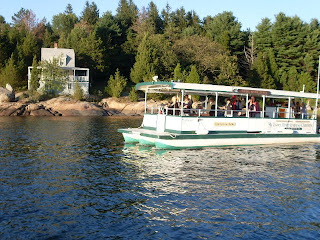 MARCO THE GONDOLIER
MARCO THE GONDOLIER CANAL WITH WOODEN STRUCTURES
CANAL WITH WOODEN STRUCTURES SEARCHING FOR BARGAINS IN THE RIALTO
SEARCHING FOR BARGAINS IN THE RIALTO BRIDE AND GROOM IN PIAZZA SAN MARCO
BRIDE AND GROOM IN PIAZZA SAN MARCO THE SNAKE MADE ME DO IT!
THE SNAKE MADE ME DO IT!I just love the sound of Italian in the morning!
“Buon giorno,” says our waitperson.
“Due café,” I reply. “Espresso con pane e uno cappuccino con biscotti.”
I’m not sure if I get the hand gestures right but the accent is understandable.
Our waitperson bustles off.
We are sitting in the sunshine on the Grand Canal facing the Rialto Bridge with our first coffees and the whole day ahead. “Che buona fortuna!”
The guys in the nautical black hats and striped sailor shirts are ‘gondolieri’. For 70 euros the four of us clamber aboard for a thirty minute gondola trip to the Grand Canal, the Rialto fish market and back . Our gondolier is named Marco. He and I are both namesakes of the patron Saint of Venezia – San Marco. Marco points out some of the original wooden structures that are 500+ years old and date to the time when the proto-Venetians moved to this inaccessible swamp to avoid Attila and the gang. (see 'Hungarian-One Easy Lesson' in my August 4, 2008 blog)
These pre-date the glorious stone and brick ‘palazzos’ built during Venice’s ascendancy as the major naval power in the Levant from 1200-1500 C.E. We see a famous tenor walking to the opera house on his way to work. Hailed by Marco, he smiles and waves.
Shops take up most of the area between the Rialto and St. Mark’s square. By the time we reach the Piazza San Marco, everyone is tired, thirsty and out of euros. We take a break for pizza and gelato and, of course, more café –‘stile Italiano’.
It’s Saturday and I snap a nice photo of a bride and groom on their wedding day in front of the western façade of St. Mark’s. No one else wants to see the paintings by Tiepolo and Tintoretto that decorate the Doge’s palace. They go off shopping while I sit in the sun, watching tour groups and flocks of pigeons perambulate the Piazza. The tour groups crowd around their guide’s banner. Meanwhile, the pigeons congregate in not dissimilar fashion around individuals holding paper cones high in their outstretched arms. I flash on a scene from my childhood: I’m standing in Piazza San Marco. I’m holding a cone of cracked corn. Pigeons sit on my head and arms while Dad takes my picture. I remember the feeling of scratchy pink pigeon feet on my seven year old scalp. Funny thing memories! I wonder what our bride and groom will remember of their wedding day 50 years from now?
I photograph the mosaics and the statues on the outside of the palace. My favorite is the statue of Adam and Eve on the Southeast corner. The snake is in the middle. The tree of life has everybody adequately covered. It looks to me like Eve is pointing accusatorily at the serpent. “The snake made me do it.”
No time to gaze at art. We hike further east to Ile Pomeni – a small island in a residential neighborhood. It’s evening and families promenade with their dogs and children in the afternoon sunshine. There are no cars in all of Venice so people are free to inhabit the streets. And they do! How wonderful to live where walking is the norm. In this respect, Venice is a lot like Amesbury’s sister village of Esabalu in Kenya. If you haven’t lived in a community of pedestrians before, you really haven’t lived the way human beings should.
After sunset, Venice is magic! We cross the Rialto Bridge an dine at an outdoor restaurant in Campo San Polo. San Polo is the second largest public square in Venice, after Piazza San Marco. Bullfights used to be held at Campo San Polo and Lorenzo di Medici was assassinated here.
The spaghetti at the local trattoria is so expensive that we have to send John out to find an ATM in order to get tip money. Of course, John gets a little disoriented by the winding streets and we send out a search party (me). I leave Marg and Rena wondering if they’ll have to do dishes in an Italian ristorante. After a long meander I find John wrestling with the ATM. We figure out why his card isn’t working (in Italian) and return to the ladies patiently wondering where in the heck we are. ‘Missione compiuta.’
Never mind. The food is delicious. The lights, the lively Saturday night crowd, the strolling classical street musicians on a clear autumn evening weave a spell. Ciao Venezia! I’d stay longer if I could.



















































